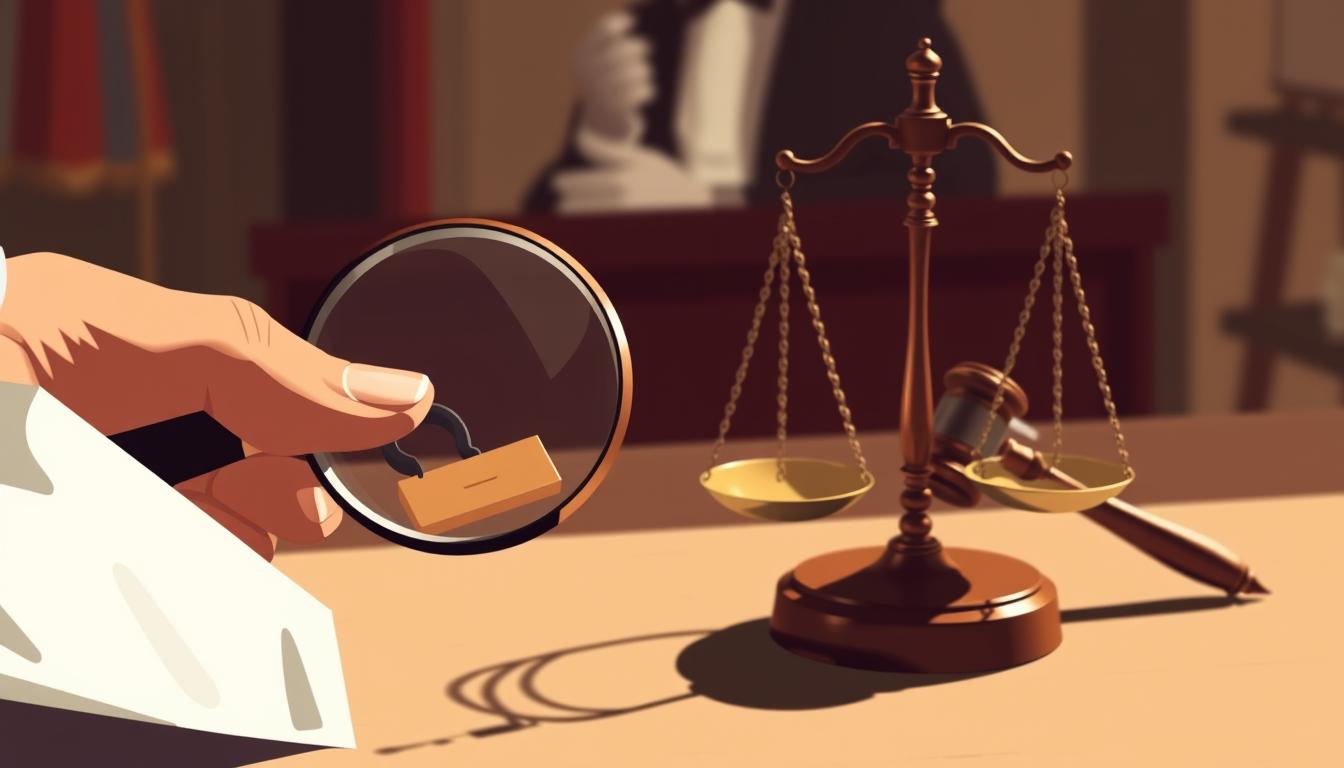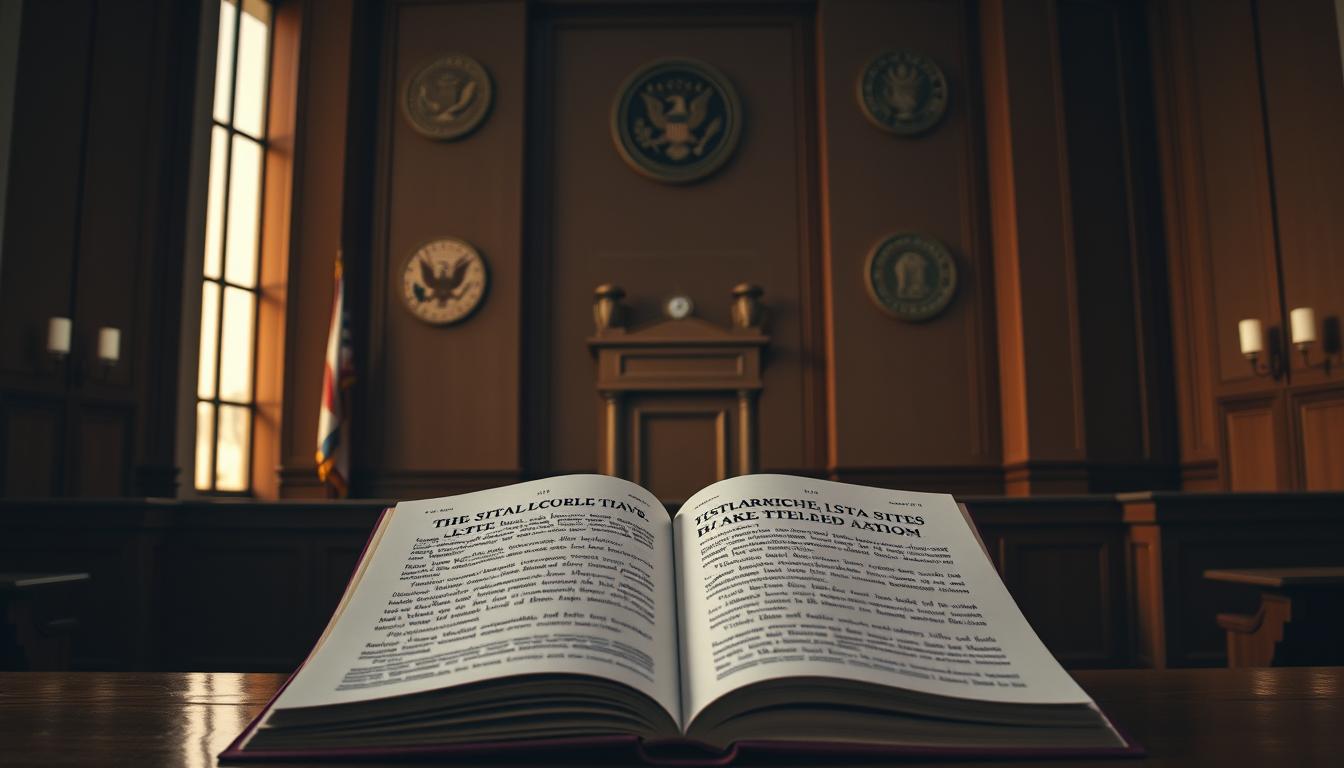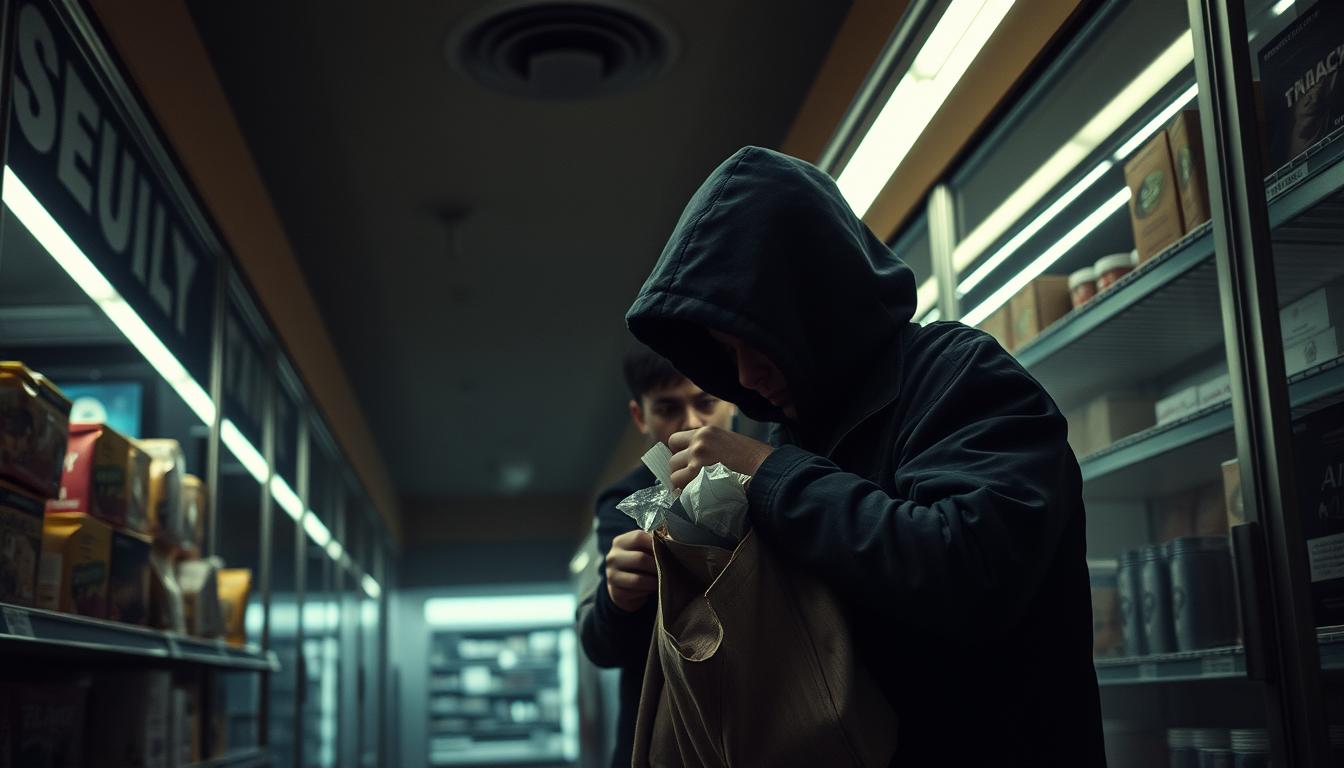In the United States, retail theft results in billions of dollars in losses annually. Shoplifting is a big part of this problem. The laws about shoplifting are different, which can confuse people.
I get asked a lot about the legal side of shoplifting. It’s important to know that the law depends on a few things. These include how much was stolen and if the person has been in trouble before.

It’s key to understand shoplifting laws to know why some cases are misdemeanors and others are felonies. This difference is important because it affects the legal outcome a lot.
Key Takeaways
- The legal classification of shoplifting varies by jurisdiction.
- The value of stolen goods is a key factor in determining whether shoplifting is a misdemeanor or felony.
- Prior convictions can influence the severity of the charges.
- Shoplifting laws differ significantly across the United States.
- Understanding local laws is crucial for both retailers and individuals.
Understanding Shoplifting: Legal Definition and Basic Concepts
Shoplifting is a type of theft that happens in stores. It’s important to know what it is and the laws around it.
What Legally Constitutes Shoplifting
Shoplifting, or retail theft, means taking things from a store without paying. This includes hiding items, changing prices, or leaving without paying.
Key elements that constitute shoplifting include:
- Intent to deprive the store of merchandise
- Concealment or removal of items from the store premises
- Alteration or manipulation of pricing or packaging
Common Misconceptions About Shoplifting Laws
Many think shoplifting isn’t a big deal, even if the items are cheap. But, shoplifting laws protect stores and their goods. A common myth is that it’s only a crime if you leave the store with the stolen items.
“The act of shoplifting is not just about the value of the items taken, but also about the intent behind the action.”
Different Types of Retail Theft
Retail theft can happen in many ways, including:
- Shoplifting by individuals or groups
- Organized retail crime, where groups work together to steal and resell merchandise
- Employee theft, where staff members steal from their employer
Knowing these types of retail theft helps stores and police fight it better.
Is Shoplifting a Misdemeanor or a Felony?
The legal system looks at each shoplifting case to decide if it’s a misdemeanor or a felony. This choice affects the penalties the person will face.
General Classification Guidelines
Shoplifting is usually classified by the stolen item’s value and the person’s past crimes. Misdemeanor shoplifting is for smaller thefts. Felony shoplifting is for bigger thefts or if the person has been in trouble before.
The Gray Area Between Classifications
There’s a gray area between misdemeanor and felony for some cases. This happens when the stolen goods’ value is close to the threshold or if the person has a mixed criminal history. Prosecutors must look at these details to decide the right charge.
How Prosecutors Make Charging Decisions
Prosecutors think about several things when deciding on charges. They look at the value of the stolen merchandise, the person’s intent and state of mind, and their prior criminal record. They weigh these to find the best charge.
Knowing the difference between misdemeanor and felony shoplifting is key for those facing charges. It can greatly affect their future. The legal system tries to apply fair and just penalties based on each case’s specific details.
Key Factors That Determine Shoplifting Charges
The severity of shoplifting charges depends on several key factors. Knowing these elements helps understand the possible outcomes of shoplifting convictions.
Value of Stolen Merchandise
The value of stolen goods is a big factor in determining charges. Higher-value items usually lead to more severe charges. For example, stealing expensive items can result in felony charges. On the other hand, taking less expensive items might only be a misdemeanor.
Intent and Premeditation
The reason behind the shoplifting is also important. If the theft was planned, the charges could be more severe. This can turn a misdemeanor into a felony.
Prior Criminal History
Someone’s past crimes, like previous shoplifting, can affect the charges. Repeat offenders often face tougher penalties. This includes longer jail times and higher fines.
Age of the Offender
The age of the person who shoplifted is another factor. Minors might get different treatment than adults. They could be sent to juvenile programs instead of facing adult charges.
In summary, shoplifting charges are influenced by several factors. These include the value of stolen goods, the intent, past crimes, and the person’s age. Understanding these can help grasp the legal outcomes of shoplifting incidents.
State-by-State Variations in Shoplifting Laws
Shoplifting laws differ across the United States. Each state has its own rules and priorities. This shows how different states handle legal matters.

California’s Proposition 47 and Its Impact
In 2014, California passed Proposition 47. It changed some thefts, like shoplifting, to misdemeanors if the value is $950 or less. This move aimed to ease prison overcrowding and focus on more serious crimes.
New York’s Approach to Retail Theft
New York has its own rules for shoplifting. It can be a felony based on the stolen goods’ value and the person’s past crimes. The state is adjusting these rules, showing debates on punishment and helping offenders.
Texas and Southern States’ Stricter Penalties
Texas and some Southern states have harsher penalties for shoplifting. They can charge it as a felony, even if it’s a misdemeanor elsewhere. These laws show a tough stance on crime.
Recent Legal Reforms Across the Country
In recent years, the U.S. has seen legal changes. Some states have raised the value for felony shoplifting charges. Others have started new sentencing options. These changes show how shoplifting laws are evolving.
Key Points to Consider:
- The value threshold for felony charges varies significantly by state.
- Prior criminal history plays a crucial role in determining the severity of shoplifting charges.
- Some states are moving towards more lenient penalties, focusing on rehabilitation over punishment.
Misdemeanor Shoplifting: Thresholds and Consequences
It’s important to know about misdemeanor shoplifting to understand the legal trouble you might face. This type of shoplifting is based on the value of what’s stolen and the reason behind it.
Typical Value Thresholds for Misdemeanors
The rules for when shoplifting is a misdemeanor vary by state. It usually depends on the stolen item’s value. For example, in some places, if the stolen goods are worth less than $500 or $950, it’s considered a misdemeanor.
Penalties for Misdemeanor Shoplifting
For misdemeanor shoplifting, you might face fines, community service, or even jail time. The harshness of these penalties can change based on the stolen goods’ value and your past actions.
| State | Misdemeanor Threshold | Potential Penalty |
|---|---|---|
| California | $950 | Up to 6 months in jail, $1,000 fine |
| New York | $1,000 | Up to 1 year in jail, $1,000 fine |
| Texas | $500 | Up to 180 days in jail, $2,000 fine |
Long-term Implications of Misdemeanor Convictions
Even though it’s less serious than a felony, a misdemeanor conviction can still affect your life. It can impact your job chances and how others see you.
First-Time Offender Programs
Many places have programs for first-time offenders of misdemeanor shoplifting. These programs aim to keep you out of the regular justice system. They might even drop the charges if you complete the program successfully.
Felony Shoplifting: When Theft Becomes Serious
Many shoplifting cases are seen as misdemeanors. But, certain situations can make it a felony. It’s important to know these factors to understand the legal risks.
Circumstances That Elevate to Felony Status
Shoplifting can turn into a felony in several ways, including:
- High-value theft: Taking items worth a lot, as set by state laws.
- Repeat offenses: If you’ve been caught shoplifting before, you might face felony charges again.
- Use of tools or accomplices: Using tools to steal or having someone help you can make the charge worse.

Penalties and Sentencing for Felony Shoplifting
Felony shoplifting can lead to harsh penalties, such as:
- Imprisonment: You could get a long prison sentence.
- Fines: You’ll have to pay a lot of money.
- Probation: You’ll have to follow strict rules and be supervised.
Collateral Consequences of Felony Convictions
Felony convictions have long-lasting effects, including:
Voting Rights Implications
In some places, getting convicted of a felony means you can’t vote, at least for a while.
Professional License Restrictions
Having a felony conviction can stop you from getting or keeping a professional license. This can hurt your job chances.
It’s key to understand how serious felony shoplifting charges are. If you’re facing these charges, getting a lawyer is very important. They can help you deal with the legal issues.
Aggravating Factors That Can Increase Shoplifting Charges
Shoplifting can lead to serious charges if certain factors are involved. These factors can make a small crime into a big one with harsh penalties.
Use of Tools or Devices to Facilitate Theft
Using tools like booster bags or magnetic detachers to steal is a big deal. It shows you planned to steal and can lead to harsher penalties.
Organized Retail Crime Involvement
Being part of organized retail crime (ORC) can also raise charges. ORC is large-scale theft linked to other crimes. Being involved can mean felony charges because of the crime’s size and planning.
Violence or Threats During the Act
Using violence or threats while stealing can make charges worse. If you harm or threaten people, you could face more serious charges like assault.
Theft of Specific Items (Firearms, Pharmaceuticals)
Stealing items like firearms or medicines can lead to harsher penalties. These items are dangerous and can harm many people, so stealing them is taken very seriously.
| Aggravating Factor | Potential Charge Escalation |
|---|---|
| Use of Tools/Devices | Felony due to premeditation |
| Organized Retail Crime | Felony due to scale and organization |
| Violence/Threats | Additional charges for assault/intimidation |
| Theft of Firearms/Pharmaceuticals | Increased penalties due to public safety risk |
Knowing about these factors helps understand why shoplifting charges can get worse. It’s important to know what makes a crime more serious to deal with legal issues better.
Civil Penalties and Retailer Responses to Shoplifting
Shoplifting has become a big problem for retailers. They are now using civil recovery demands to fight back. This method helps them get their money back and scares off others from stealing.
Civil Recovery Demands from Retailers
Retailers are now going after shoplifters with civil recovery demands. These demands ask for the stolen items’ value plus extra fees for looking into the case.
Store Banning and Trespass Warnings
Stores also ban people who steal from them. This means they can’t shop there anymore. It’s a big deal for those who get banned.
How Retailers Determine When to Press Charges
Stores decide to press charges based on how serious the crime is. They look at the stolen goods’ value and if the person has stolen before. They also check if violence was used.
Security Measures and Loss Prevention Tactics
Retailers use many ways to stop shoplifting. They have CCTV cameras, security tags, and loss prevention officers. These steps help keep thieves away and catch those who try to steal.
| Security Measure | Description | Effectiveness |
|---|---|---|
| CCTV Cameras | Monitoring store areas | High |
| Security Tags | Attaching tags to merchandise | Medium-High |
| Loss Prevention Officers | Trained staff to prevent and respond to shoplifting | High |
Retailers keep finding new ways to deal with shoplifting. Using civil penalties and better security is a big part of their plan.
Legal Defenses Against Shoplifting Charges
Shoplifting charges can be fought with different legal defenses. This could lead to lighter penalties or even dropped charges. It’s key for those accused to know these defenses.
Lack of Intent Defense
The lack of intent is a common defense. It says the accused didn’t mean to hide or take something. For example, forgetting to pay for something or leaving the store with it by mistake could be seen as not intending to steal.
Mistaken Identity and False Accusations
Mistaken identity is another good defense, mainly in busy places or when video footage is fuzzy. False accusations can happen because of wrong identification or bad motives. A solid defense can show these points, possibly getting charges dropped.
Working with a Criminal Defense Attorney
Getting a criminal defense attorney is a big step in dealing with shoplifting charges. A seasoned lawyer can look at the case, find the best defense, and defend the accused in court. Their knowledge can greatly change the outcome.
Negotiating Plea Bargains in Shoplifting Cases
In some cases, the best plan is to negotiate a plea bargain. This means agreeing to plead guilty to a smaller charge for a softer sentence. A good lawyer can talk for the accused to get the best deal.
The Process: From Arrest to Resolution in Shoplifting Cases
Shoplifting cases go through a clear legal process from arrest to court decision. Knowing this helps people understand the legal system better.
What Happens During a Shoplifting Arrest
When arrested for shoplifting, you’re usually stopped by store security or police. You might be handcuffed and questioned in a holding area. The police will likely book you into jail or let you out on bail.
Pretrial Diversion Programs
Some places have pretrial diversion for first-time offenders. You can do community service or counseling to have charges dropped.
Court Proceedings and Potential Outcomes
Court cases for shoplifting can end in many ways. You might get charges dropped, make a plea deal, or face a trial verdict. The result depends on the evidence and your past record.
Restitution Requirements
In shoplifting cases, you often have to pay back the store. This is called restitution. It covers the cost of stolen items or losses.
Conclusion
Shoplifting laws differ a lot from one place to another. It’s very important to know the rules in your area. Whether it’s a misdemeanor or felony depends on the stolen item’s value, your past crimes, and other factors.
The penalties for shoplifting can be harsh. You might face fines, community service, or even jail time. Knowing these laws helps people make better choices and stores to protect their goods.
Being caught for shoplifting can really hurt your future. It can affect your job chances and how others see you. It’s key to know the laws and stay away from shoplifting.
FAQ
Is shoplifting always considered a misdemeanor?
No, shoplifting can be a misdemeanor or a felony. This depends on the stolen goods’ value, the person’s criminal history, and local laws.
What determines whether shoplifting is a misdemeanor or a felony?
Shoplifting’s classification depends on the stolen goods’ value. Higher values often mean felony charges. Prior convictions and aggravating circumstances also play a role.
Can a first-time shoplifting offense be considered a felony?
Yes, a first-time offense can be a felony. This happens if the stolen goods’ value is high or if there are aggravating factors.
How do shoplifting laws vary across different states?
Shoplifting laws differ by state. Some states have stricter penalties and higher felony thresholds. For example, California’s Proposition 47 made some thefts misdemeanors if the value is below a certain amount.
What are the potential consequences of a shoplifting conviction?
A shoplifting conviction can lead to fines, jail time, and restitution. It can also affect your job and education. Felony convictions have serious consequences, like losing voting rights and professional licenses.
Can a shoplifting charge be reduced or dismissed?
Yes, charges can be reduced or dismissed. This can happen through plea bargains, pretrial diversion programs, or challenging evidence with a skilled attorney.
What role does intent play in shoplifting charges?
Intent is key in shoplifting charges. The prosecution must prove the person took the merchandise without paying. A lack of intent defense can apply if the person took it by accident or had no intention to steal.
How do retailers respond to shoplifting?
Retailers fight shoplifting with security measures like cameras and loss prevention teams. They may also issue civil demands and store bans to those caught.
